Saigon Opera House Is A Journey Through Most Iconic And Cultural Landmark In Ho Chi Minh City
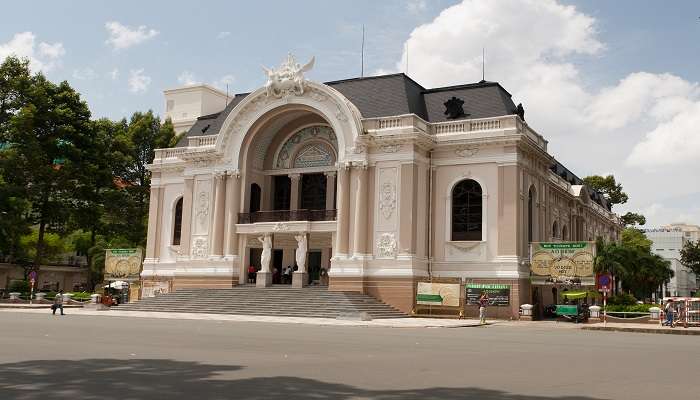
As you embark on your adventure to Vietnam’s vibrant metropolis, Ho Chi Minh City, a majestic structure beckons your attention – the Saigon Opera House. One of the most appealing aspects of this magnificent structure is that it serves not only as a stage for incredible performances but also as a historic jewel that speaks volumes about the era of French colonialism in Vietnam. The architecture behind the facade of Saigon’s opera house is very charming. Ceilings are decorated with fresco paintings portraying classic mythological scenes and Vietnamese legends. A huge crystal chandelier hanging from the ceiling lights the entrance hall.
Saigon Opera House History
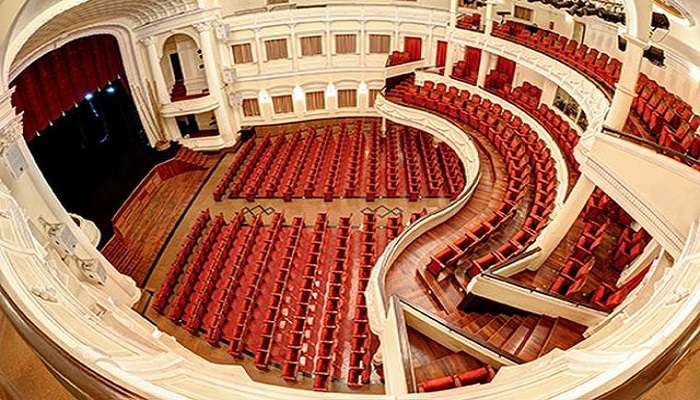
Saigon Opera House’s history traces back to the French colonial era, embodying a fusion of architectural styles and cultural influences. Also known as the Municipal Theatre, The Saigon Opera House in Ho Chi Minh City has remained an enigmatic reminder of Vietnam’s colonial past. In collaboration with architects Jules Ferret and Eugene Ferret, construction began in 1898 under French rule. The French authorities conceived it as a place where Western art forms could be displayed and became a meeting point for white-collar workers. The influence of Beaux-Arts, which became so popular during France’s Third Republic, is seen in its symmetrical proportions, grand columns, and rich decorations.
In the early 20th century, the Saigon Opera House enjoyed a golden age with many European opera companies and ballet troupes performing there. Consequently, it remained one of the finest cultural locations in colonial Vietnam and was also used for social functions and plays. However, this narrative took a dramatic twist at the end of French rule in 1954. The opera house served as a military hospital and a radio station during the Vietnam War. The opulent interior got seriously damaged.
The restoration project completed in 1998 aimed at returning the structure to its original state of glory. Historical photographs and architectural sketches were used in the renovation to ensure that the structure’s grandeur did not change. Today, Saigon Opera House is a proud emblem of national strength that has once again become an iconic institution hosting various forms of performances.
Must Read: Festivals In Ho Chi Minh City
Saigon Opera House: Architectural Marvels
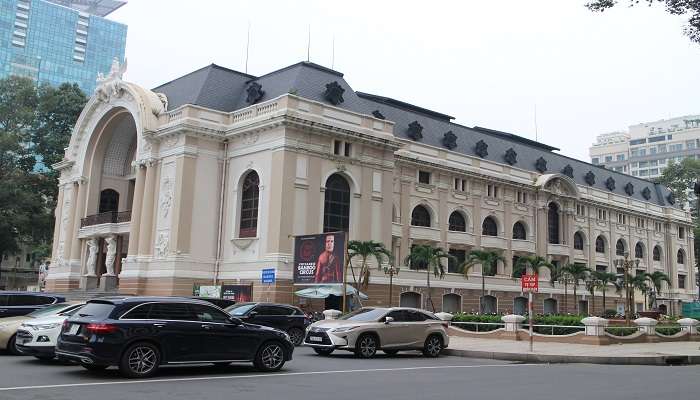
The Saigon Opera House is an architectural masterpiece of the French colonisation in Vietnam and features numerous unique additions because of Félix Olivier (architect) in collaboration with Ernest Guichard and Eugène Ferret. Among them are intricate stones, including carvings and statutes at its entrance serving visitors. Moreover, two sets of doors have been placed to shut out any traffic noise effectively and also to facilitate quiet performances.
Another feature supporting French architecture is windows with arches containing raised railings. Modern electrical facilities, lighting equipment, and sound systems were also installed in compliance with ecological standards, ensuring a perfect acoustic experience within the theatre. It now seats around 500 people for a more intimate atmosphere with luxurious velvet chairs.
Saigon Opera House: Performances
The Saigon Opera House in Ho Chi Minh showcases a multitude of vibrant shows which express Vietnamese culture alongside history. Here’s a glimpse into what you might experience:
1. A O Show
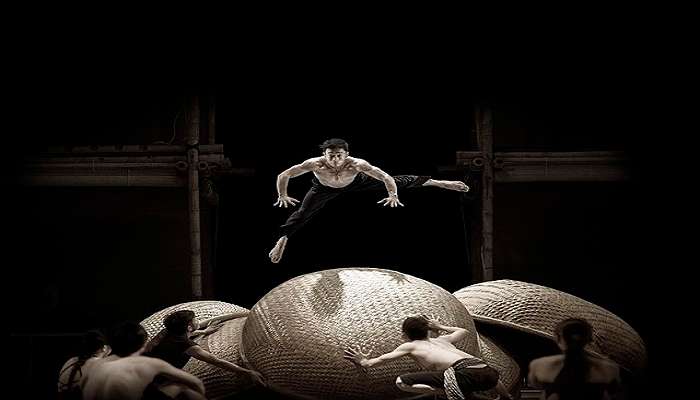
It presents differences between rural peace and urban hustle & bustle through its dances/artistic demonstrations, hence being called “A O”. The fusion of different art forms used in making up this show is just amazing, whereby acrobats ascend against gravity while dancers go through a series of contemporary moves. Traditional elements are included in Vietnamese performances, alongside soulful southern Vietnamese song melodies and live music. This mix plays an important role in reflecting the deep cultural layers inherent in Vietnam.
Suggested Read: Landmarks in Vietnam
2. Teh Dar
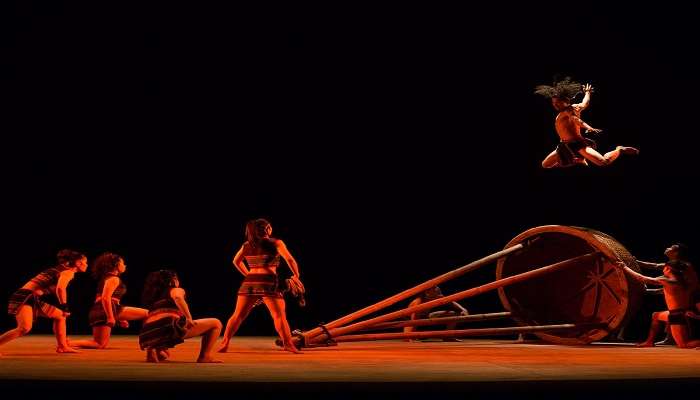
It takes the audience into a deeply fascinating world of highlanders in Vietnam. It will take you on wild hunting adventures, romantic moonlit encounters, and stories about life, death and rebirth. The piece of music is crafted from the enchanting sounds of exotic tribal instruments. “Teh Dar” means “going in a circle”, which signifies this performance’s devotion to preserving and embracing the treasure trove of Vietnam’s tribal cultures. As the talented artists enthral you, the circle of tribal life continues to spin, ensuring the enduring legacy of these vibrant cultures.
3. The Mist
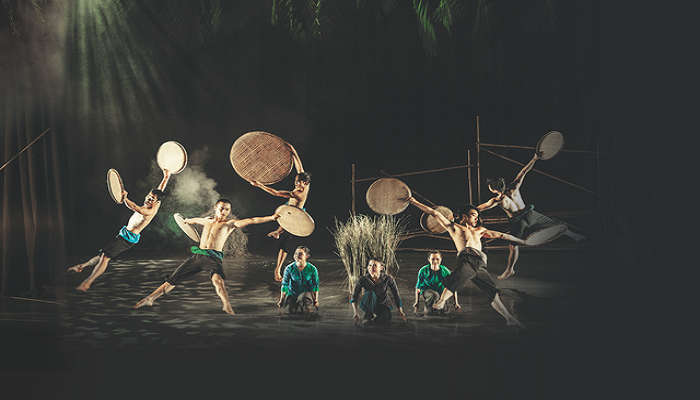
The Mist tells the story of the lives of southern Vietnamese peasants through modern ballet and neoclassical dance. This group of professional dancers represents courage and hope. The performance provides an insight into their lives by utilising metaphors based on rice cultivation. They appreciate their victorious harvest period in which they metamorphose into shining pearls to symbolise endurance. The Mist is an enthralling sixty-minute show with a range of emotions marvellously heightened by stirring live music, stunning visuals, and dramatic lighting effects.
Suggested Read: Places To Visit In Vietnam With Family
Saigon Opera House: Nearby Attractions
When you visit the Saigon Opera House, you’ll find yourself in the heart of Ho Chi Minh City’s bustling District 1, surrounded by many attractions to explore. After marvelling at the Opera House’s stunning architecture and perhaps catching a captivating performance, consider venturing out to discover more of what this vibrant city offers.
1. Notre Dame Cathedral: A Beacon Of French Colonial Grandeur
This splendid neo-Romanesque Basilica is built entirely of red brick, a remarkable expression of French colonisation in Vietnam. The windows have been painted with beautiful colours to glow when sunlight enters them. Notre Dame Cathedral still functions as a Catholic Church where worshippers can seek solace amidst the city’s hustle and bustle. Visitors can walk around the cathedral complex and see well-kept gardens with statues and fountains. There are local street food vendors and souvenir sellers just outside the Cathedral.
2. Central Post Office: A Blend Of History And Communication Marvels
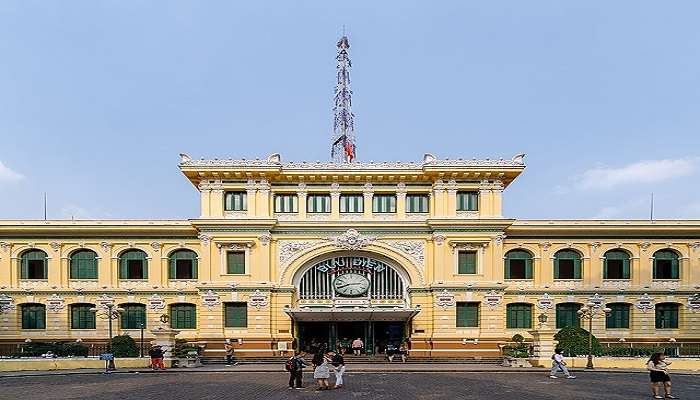
The Central Post Office boasts huge arched windows on its façade, decorative columns and a clock tower to add grandness. As soon as you enter the Central Post Office, you will see a large hall with carved stucco decorations and monumental ventilation grilles. Wooden booths separate the working post office section from the tourist area. On one side were rows of counters displaying many different Vietnamese stamps – both current and historical- issued by Vietnam’s government over the years. A postcard showing interesting Vietnam landmarks is available for your convenience.
Suggested Read: Notre Dame Cathedral Of Saigon
3. Ben Thanh Market: A Sensory Feast In The Heart Of The City

Established in the late 19th century, this busy market comprises over fifteen hundred stalls. You will get everything from colourful clothes and handmade gifts to fresh vegetables and spices. Do not hesitate to negotiate with the sellers. Check out hidden areas in the market that stock rare items. You could run into stalls selling jewellery pieces, traditional musical instruments or even antiques. Ben Thanh Market is not just a shopping place but a cultural experience. This exciting market provides a glimpse into the heart of Ho Chi Minh City.
Further Read: Lakes In Vietnam
The Saigon Opera House is a canvas illustrating history, culture and artistic expression. Imagine a curtain going up and looking at the stage full of life and colour. Witness performances that will mesmerise you and learn about centuries-old traditions. Plan your trip to Ho Chi Minh City and visit this magical place, where history, culture, and artistic expression intertwine to create an unforgettable spectacle.
For our editorial codes of conduct and copyright disclaimer, please click here.
Cover Image Credit : Ekrem Canli for wikimedia commons
Frequently Asked Questions About Saigon Opera House
Is there any dress code for visiting Saigon Opera House?
No, there is no strict dress code, but smart casual attire is recommended for all visitors.
Is there any designated place where I can keep my belongings while I attend a show?
There is a designated place where you can leave your purse, jacket or any other thing at a small fee.
Are there any restaurants near the Saigon Opera House?
Yes, there are many eateries within walking distance which offer different cuisines.
What is the best way to reach Saigon Opera House?
You can easily reach there by public transportation like a taxi. The Opera House Metro Station is also a great option.
Is photography allowed inside the Saigon Opera House?
It is only allowed in the common areas such as the foyer and grand staircase.
People Also Read:
Dragon Bridge Tien Ong Cave Dau Go Cave

With a passion for exploring and travelling to the roads long forgotten, experience the world through enthralling stories and adventures. Join me as I share my experiences at some of the world’s most popular tourist destinations and quench that pestering curiosity with something exciting!











